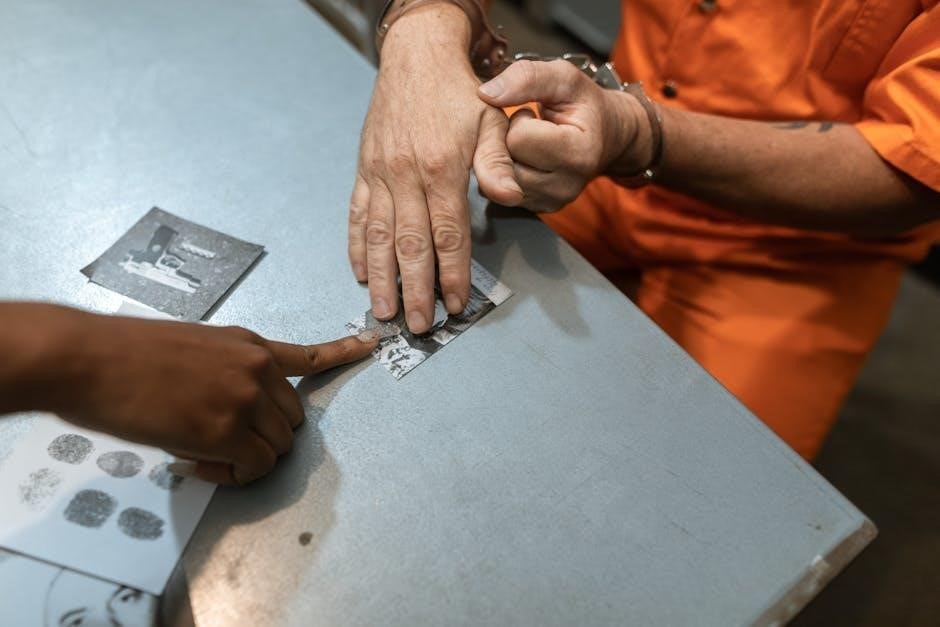Explore the essential practices and tools for conducting digital investigations, from data acquisition to evidence analysis. This guide covers legal standards, emerging technologies, and expert techniques for handling cybercrimes and ensuring data integrity in forensic processes.
Computer forensics, now commonly referred to as digital forensics, is the scientific process of collecting, analyzing, and preserving digital evidence to investigate cybercrimes, data breaches, and other malicious activities. This discipline has evolved significantly with the rise of technology, addressing the growing need for secure and reliable methods to handle digital data. Digital forensics involves understanding how to identify, track, and prosecute criminal activities conducted through computers, networks, and other digital devices. It is a critical component of modern law enforcement and corporate security strategies, ensuring the integrity of digital evidence for legal proceedings. Key areas include data acquisition, analysis, and presentation, all of which require specialized tools and techniques. The field also emphasizes the importance of legal compliance and ethical practices to maintain the admissibility of evidence in court. As technology advances, digital forensics continues to adapt, addressing challenges such as cloud computing, IoT, and dark web investigations. Educational resources, like the EC-Council’s Computer Forensic Series, provide foundational knowledge for professionals entering this field, equipping them with skills to tackle complex digital investigations effectively.
The Digital Forensics Investigation Process
The digital forensics investigation process is a structured approach to identifying, collecting, analyzing, and presenting digital evidence. It begins with preparation, including understanding legal requirements and gathering necessary tools. Evidence collection involves securing devices and data, ensuring integrity through validated tools and techniques. Analysis follows, where experts examine data for relevant information, often using forensic software like FTK. Documentation is critical, as detailed records are required for legal admissibility. The process concludes with reporting and presenting findings, ensuring clarity for stakeholders. Legal compliance and ethical practices are emphasized throughout to maintain evidence integrity. This systematic method is essential for uncovering facts in cybercrimes and data breaches, ensuring reliable outcomes in investigations and court proceedings.
Computer Forensics Tools and Techniques
Computer forensics relies on specialized tools and techniques to extract and analyze digital evidence. Forensic software such as FTK (Forensic Toolkit), EnCase, and Volatility are widely used for tasks like disk imaging, data recovery, and memory analysis. These tools help investigators identify hidden or deleted files, track user activity, and reconstruct system events. Techniques include keyword searches, registry analysis, and network traffic monitoring to uncover potential evidence; Mobile and cloud forensics tools are also essential for investigating modern devices and platforms. Open-source tools like Autopsy and Plaso provide affordable solutions for smaller investigations. Additionally, techniques such as hashing ensure data integrity, while live analysis allows for real-time data capture. These tools and methods are critical for handling cybercrimes, data breaches, and legal proceedings, ensuring accurate and reliable results in digital investigations.
Data Acquisition and Analysis in Digital Investigations
Data acquisition is the process of securely collecting digital evidence from devices such as hard drives, mobile devices, and cloud storage. It requires careful handling to maintain data integrity and prevent tampering. Forensic imaging tools like FTK and EnCase create exact copies of data, ensuring original evidence remains untouched. Hashing algorithms validate the integrity of collected data, while write-blockers prevent accidental data modification during the process.
Analysis involves examining the acquired data to identify relevant evidence. Techniques include keyword searches, file recovery, and timeline reconstruction. Tools like Volatility analyze memory dumps for signs of malware or unauthorized access. Data carving extracts files from unallocated space, helping recover deleted evidence. Logs and artifacts, such as browser history and registry entries, provide insights into user activity.
Challenges arise with encrypted data, large datasets, and cross-platform compatibility. Advanced tools and automation streamline analysis, enabling investigators to focus on critical evidence. Proper documentation and chain of custody are essential for presenting findings in legal proceedings. This phase is crucial for uncovering facts and linking digital evidence to criminal or unauthorized activities.
Legal Considerations in Digital Evidence Collection
Legal considerations are critical in digital evidence collection to ensure admissibility in court and compliance with privacy laws. Investigators must obtain proper authorization, such as search warrants, before accessing devices or data. This prevents illegal search and seizure claims and maintains the integrity of the evidence.
The chain of custody must be meticulously documented to verify that evidence has not been tampered with or altered. This includes detailed records of who handled the evidence, when, and how it was stored. Additionally, data integrity is verified using hashing algorithms to confirm that the evidence remains unchanged from the time of collection.
Privacy laws vary by jurisdiction, requiring investigators to balance legal obligations with individual rights. For instance, accessing cloud data may involve international laws and service provider policies. Ethical practices, such as minimizing intrusion into personal data, are also essential. Proper legal protocols ensure that digital investigations are conducted responsibly and effectively.
Investigating Cybercrimes and Incident Response
Investigating cybercrimes and responding to incidents requires a systematic approach to identify, contain, and mitigate threats. Digital forensic experts use specialized tools to trace malicious activities, such as reverse image searches for identifying individuals or locations. Key steps include analyzing network logs, examining malware behavior, and reconstructing timelines of events.
Incident response plans must be tailored to the nature of the threat, ensuring minimal disruption to operations while preserving evidence. Investigators often employ tools like FTK to analyze data and track cybercriminals. Collaboration with legal teams is crucial to ensure compliance with regulations and prepare for potential legal actions.
Post-incident activities involve documenting lessons learned and strengthening security measures to prevent future breaches. Continuous training and updated tools are essential for staying ahead of evolving cyber threats. Effective cybercrime investigations rely on a combination of technical expertise, legal knowledge, and strategic planning.
Specialized Areas in Digital Forensics
Digital forensics encompasses various specialized areas, each requiring distinct expertise and tools. Cloud forensics involves investigating data stored in cloud environments, addressing challenges like data dispersion and jurisdictional issues. Mobile forensics focuses on extracting evidence from smartphones, tablets, and other portable devices, often involving bypassing encryption or recovering deleted data.
IoT (Internet of Things) forensics deals with connected devices, such as smart home systems or wearables, which can provide critical evidence in investigations. Social media forensics involves analyzing posts, messages, and user activity to track individuals or uncover criminal activities. Reverse image search is a valuable technique in this field for identifying locations or people.

Malware forensics specializes in analyzing malicious software to understand its behavior, origins, and impact. Wireless network forensics examines data transmitted over Wi-Fi or other wireless networks, often used in corporate or public spaces. Each area demands unique methodologies and tools to ensure accurate and reliable results.

Experts in these fields must stay updated on emerging technologies and threats to effectively investigate and analyze digital evidence in specialized domains.
Reporting and Presenting Digital Evidence
Reporting and presenting digital evidence are critical steps in any forensic investigation. The findings must be clear, concise, and accessible to both technical and non-technical stakeholders. Investigators ensure that the data collected is accurate and admissible in court by maintaining its integrity throughout the process.
Legal standards require that digital evidence be properly documented and validated. Tools and methodologies used in the investigation should be reliable and accepted within the forensic community. This ensures that the evidence presented is credible and withstands scrutiny.
When presenting digital evidence, forensic experts often use visualization tools to make complex data understandable. This helps in conveying the findings effectively to judges, jurors, and other decision-makers. The report should include detailed explanations of the methods used, the results obtained, and the conclusions drawn.

Ultimately, the goal is to provide a comprehensive and transparent account of the investigation, enabling authorities to make informed decisions based on the evidence presented.
Case Studies in Computer Forensics

Case studies in computer forensics provide real-world insights into how digital investigations are conducted and how evidence is analyzed. These studies highlight the challenges and successes faced by forensic experts in various scenarios, offering valuable lessons for both professionals and students.
Examples include investigations involving malware attacks, data breaches, and intellectual property theft. For instance, a case study might detail how forensic tools like FTK were used to recover deleted files and trace malicious activities. Another might explore the use of reverse image search to identify individuals or locations in digital investigations.
These case studies emphasize the importance of maintaining data integrity and adhering to legal standards. They also demonstrate how emerging technologies, such as cloud forensics and IoT device analysis, are shaping modern investigations. By examining these scenarios, practitioners can improve their skills in acquiring, analyzing, and presenting digital evidence effectively.
Such studies are essential for understanding the practical application of forensic techniques and staying updated on industry trends and methodologies.
The Future of Computer Forensics and Investigations
The future of computer forensics is rapidly evolving, driven by advancements in technology and the growing complexity of cyber threats. Emerging technologies such as quantum computing, artificial intelligence, and machine learning are expected to play a significant role in shaping the field. These tools will enhance the speed and accuracy of data analysis, enabling investigators to handle larger datasets and more sophisticated attacks.
Cloud forensics and IoT device investigations will become increasingly important as more data moves to the cloud and connected devices proliferate. Additionally, advancements in encryption and blockchain technology will present new challenges and opportunities for forensic experts. The integration of automation in forensic tools will streamline processes, reducing human error and improving efficiency.
Education and training will also evolve, with a greater emphasis on specialized skills like reverse engineering and threat hunting. As cybercrimes become more global, international collaboration and standardized protocols will be critical to ensure effective investigations and prosecutions.
Resources for Further Learning
To deepen your knowledge in computer forensics, explore the following resources:
- Textbooks: The “Guide to Computer Forensics and Investigations” by Nelson, Phillips, Steuart, and Wilson is a comprehensive textbook ideal for students and professionals.
- Online Courses: Platforms like Coursera and Udemy offer specialized courses on digital forensics, malware analysis, and incident response.
- Tools: Familiarize yourself with forensic tools like FTK, EnCase, and Autopsy for hands-on experience in data analysis and recovery.
- Research Platforms: Use ResearchGate to access academic papers and stay updated on the latest trends and methodologies in digital forensics.
- Communities: Join professional forums and groups to network with experts and gain insights into real-world investigations and challenges.

These resources provide a well-rounded foundation for continuous learning and skill development in the dynamic field of computer forensics.

No Responses